Шины и диски для автомобиля Mitsubishi
Подбор шин и дисков по автомобилю Митсубисхи
- 3
- 3000 GT 51990-2001
- A
- Airtrek 52001-20052021-2023
- Aspire 51998-2003
- ASX 462010-2023
- Attrage 52013-2023
- B
- Bravo 31991-1999
- C
- Carisma 111995-2004
- Challenger 81996-20062008-2015
- Chariot 101988-1997
- Chariot Grandis 21997-2003
- Colt 741991-20122023-2024
- Colt CZC 62006-2009
- Colt L300 22007-2023
- Colt Plus 32004-2023
- D
- Debonair 21992-2000
- Debonair V 51989-1992
- Delica 18
- Delica Cargo 11999-2010
- Delica D:2 4
- Delica D:3 3
- Delica D:5 14
- Delica Mini 12023
- Delica Space Gear 81994-2007
- Delica Star Wagon 81986-1999
- Delica Truck 51999-20112019-2024
- Delica Van 61999-2024
- Diamante 101990-2005
- Diamante Wagon 21993-2001
- Dignity 41999-20012012-2017
- Dingo 61998-2003
- Dion 22000-2006
- E
- Eclipse 281990-2012
- Eclipse Cross 162017-2024
- Eclipse Spider 22004-2006
- e
- eK 22001-2012
- eK Active 12004-2006
- ek Classy 12004-2005
- eK Custom 112013-2019
- eK Space 132014-2023
- eK Space Custom 112014-2020
- eK Wagon 172001-2023
- eK X 32019-2023
- eK X Space 22020-2022
- E
- Emeraude 41992-1996
- Endeavor 42003-2011
- Eterna 151988-1996
- Eterna Sava 41988-1992
- Eterna Sigma 31988-1990
- Express 22020-2022
- F
- FTO 81994-2001
- G
- Galant 451989-2014
- Galant Fortis 62007-2015
- Galant Fortis Sportback 32008-2015
- Galant Sigma 31988-1990
- Galant Sports 31994-1996
- Grand Lancer 12017-2023
- Grandis 32003-2010
- GTO 221990-2000
- i
- i 32005-2013
- i-MiEV 52009-2020
- J
- Jeep 11986-1998
- L
- L200 421986-2024
- L300 61994-20132019-2023
- L400 41994-2001
- Lancer 1611988-2017
- Lancer Cargo 162008-2019
- Lancer Cedia 22000-2003
- Lancer Cedia Wagon 12000-2003
- Lancer Evo IX 1
- Lancer Evo VII 1
- Lancer Evo VIII 1
- Lancer Evolution 4019921994-2017
- Lancer Fortis 22007-2013
- Lancer Wagon 32003-2007
- Legnum 71996-2002
- Libero 111992-2002
- M
- Magna 161991-2005
- Maven 12005-2009
- Minica 141989-2011
- Minica Toppo 51990-1998
- Minicab Truck 42005-20062014-2023
- Minicab Van 141999-2023
- Minicab-MiEV 32011-2023
- Mirage 391987-20012012-2024
- Mirage Asti 61993-2000
- Mirage G4 52013-2024
- Montero 221989-2021
- Montero Sport 261996-2023
- N
- Nativa 82008-2016
- O
- Outlander 962003-2024
- Outlander Sport 132010-2024
- P
- Pajero 711989-2021
- Pajero iO 41998-2007
- Pajero Jr 11995-1999
- Pajero Mini 141994-2012
- Pajero Pinin 51998-2006
- Pajero Sport 361998-2024
- Pajero TR4 22002-2015
- Pistachio 11999-2000
- Proudia 91999-20012012-2017
- R
- Raider 62006-2009
- RVR 301991-20032010-2024
- RVR Roadest 22011-2017
- S
- Shogun 72006-2019
- Shogun Sport 22017-2021
- Sigma 31990-1996
- Space Gear 51995-2002
- Space Runner 81991-2002
- Space Star 241998-20042012-2024
- Space Wagon 51991-2004
- Starion 21985-1990
- Strada 211991-19992005-2023
- T
- Toppo 22008-2013
- Toppo BJ 21998-2003
- Toppo BJ Wide 11999-2001
- Town Box 111999-20112014-2023
- Town Box Wide 11999-2001
- Triton 362005-2024
- V
- Verada 91991-2005
- X
- Xforce 12023-2024
- Xpander 32017-2024
- Xpander Cross 22020-2024
Наиболее популярные модели Mitsubishi
Диски на Митсубисхи
- PCD 4x100 диаметром от 12 до 15, шириной от 3.5 до 5.5 и профилем от ET35 до ET50 как у Subaru Justy
- PCD 4x114.3 диаметром от 13 до 15, шириной от 4.5 до 6 и профилем от ET45 до ET46 как у Chery Eastar
- PCD 5x114.3 диаметром от 12 до 20, шириной от 3.5 до 8.5 и профилем от ET35 до ET87 как у Mazda CX-7
- PCD 5x139.7 диаметром от 15 до 15, шириной от 5.5 до 5.5 и профилем от ET17 до ET17
- PCD 6x139.7 диаметром от 15 до 18, шириной от 6 до 7.5 и профилем от ET10 до ET46 как у Chevrolet Colorado
Шины на Mitsubishi
- Размерность шин от R12 до R20, шириной от 135 до 265 и профилем от 40 до 85
- Минимальный размер резины: 175/65 R14, максимальный: 265/75 R15
Любимые летние шины
Любимые зимние шины
Фотографии шин на Mitsubishi
Наиболее популярные модели шин
Шины на Mitsubishi (Митсубисхи)
Автомобильная марка Mitsubishi принадлежит одноименной японской компании, одного из крупнейших производителей колесной техники у себя в стране. С октября 2016 года фирма входит в альянс Renault-Nissan-Mitsubishi, участвуя в совместном предприятии 34% своих акций.История становления
Компания ведет свою историю, как автомобильный производитель с 1917 года, когда у Mitsubishi Shipbuilding состоялся дебют в этой отрасли — Model A, оказавшийся первым в Японии серийно выпущенным автомобилем. Он представлял собой 7-местный седан, который был собран вручную из машинокомплекта Fiat Tipo 3. Производственный процесс оказался более чем дорогостоящим по сравнению с американскими и европейскими конкурентами, использующими конвейер, из-за чего Model A перестала выпускаться уже в 1921 году. За это время было собрано всего 22 экземпляра. В 1934 году Mitsubishi Shipbuilding и Mitsubishi Aircraft, занимавшаяся производством авиационных двигателей, были объединены, образовав широко известную в наши дни Mitsubishi Heavy Industries, японского индустриального гиганта. Начавшаяся в середине 30-х череда военных конфликтов, последовавшая за ними Вторая мировая война, прервали производство автомобилей, возврат к которому состоялся сразу после ее окончания. В серию пошел автобус Fuso, компактный 3-колесный грузовик Mizushima и скутер Silver Pigeon. В 1950 году компания была разделена на три региональных фирмы, каждая из которых продолжила заниматься выпуском автомобильной техники, но, при этом, сотрудничая с разными иностранными автопроизводителями. В частности, East Japan Heavy-Industries начала производить копия Henry J, недорогого седана американской Kaiser. В свою очередь, Central Japan Heavy-Industries выпускала копию Jeep CJ-38, последние экземпляры этого внедорожника сошли с конвейера в 1998 году, через 30 лет после того, как Wilys перестал производить эту модель.Mitsubishi в 60-е
Окончательное восстановление бренда после Второй мировой войны началось в начале 60-х годов прошлого столетия. Разделенная на три части компания стала единым предприятием в 1964 году. За предыдущие три года ее подразделениями были выпущены знаковые для марки модели — седан 500, kei, а также Colt, ставший основой для целой линейки компактных автомобилей, существующих и в наши дни. В 1969 году появилось первое поколение Galant, ставшее «локомотивом» продаж марки на несколько десятилетий вперед и открывшее рынки Европы и Северной Америки. К этому времени активно стал использоваться знаменитый логотип с тремя красными ромбами. Его выбрал Ивасаки Ятаро, основатель Mitsubishi, так как он напоминал эмблему клана Тоса, давшего ему первую в его жизни работу, а также потому, то он похож на его собственный фамильный герб, представляющий собой три ромба, сложенных друг на друга.Модельный ряд
Преследовавшие компанию предыдущие несколько десятков лет финансовые неурядицы и вызванные ими различные скандальные по содержанию ситуации существенно поменяли взгляды на формирование линейки продукции. Она составлена из легковых автомобилей, внедорожников, пикапов, кроссоверов и минивэнов. Но при этом каждая серия моделей предназначена для рынков определенных стран и регионов, будучи не представленной где-либо еще. В частности, популярный ранее по всему миру седан Lancer в настоящее время доступен лишь на Тайване, где он собирается на предприятии China Motor Corporation, наряду с Colt в кузове универсал. Eclipse Cross представлен по всему миру, кроме Юго-Восточной Азии. Она же довольствуется более компактным кроссовером Xforce, который недоступен в Европе и Северной Америке. Стоит отметить по-прежнему многочисленную линейку кей-каров бренда, которые предлагаются исключительно на внутреннем японском рынке. Всем этим автомобилям в течение всей их долгой жизни необходимы качественные шины, которые можно найти в магазине «Мосавтошина».Преимущества подбора на нашем сайте шин на Mitsubishi
- в каталоге регулярно появляются новинки шинной индустрии, подходящие для автомобилей Mitsubishi;- автоматизированная система подбора по одному названию модели Mitsubishi найдет, как минимум несколько вариантов шин даже в том случае, если нужны покрышки для снятых с производства автомобилей;
- возможность подбора, как шин, так и колесных дисков;
- наши менеджеры всегда помогут с поиском, покупкой и доставкой покрышек в любую область страны.
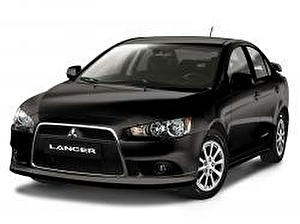
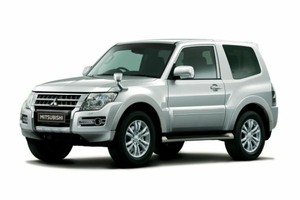
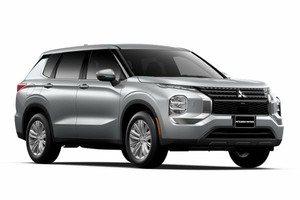
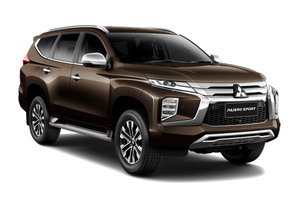
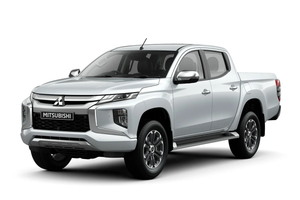

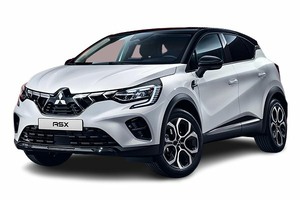
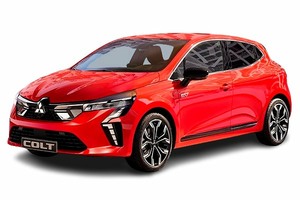

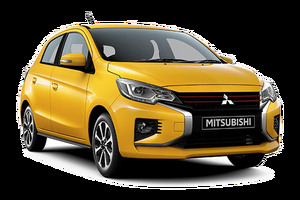








![Автомобильные шины Rydanz Roadster R02 на автомобиле mitsubishi lancer-evo-x [2449] Автомобильные шины Rydanz Roadster R02 на автомобиле mitsubishi lancer-evo-x [2449]](/i/w2a/43406418.jpg)
![Автомобильные шины BFGoodrich All Terrain T/A KO2 на автомобиле mitsubishi l200 [2584] Автомобильные шины BFGoodrich All Terrain T/A KO2 на автомобиле mitsubishi l200 [2584]](/i/w2a/60528038.jpg)




